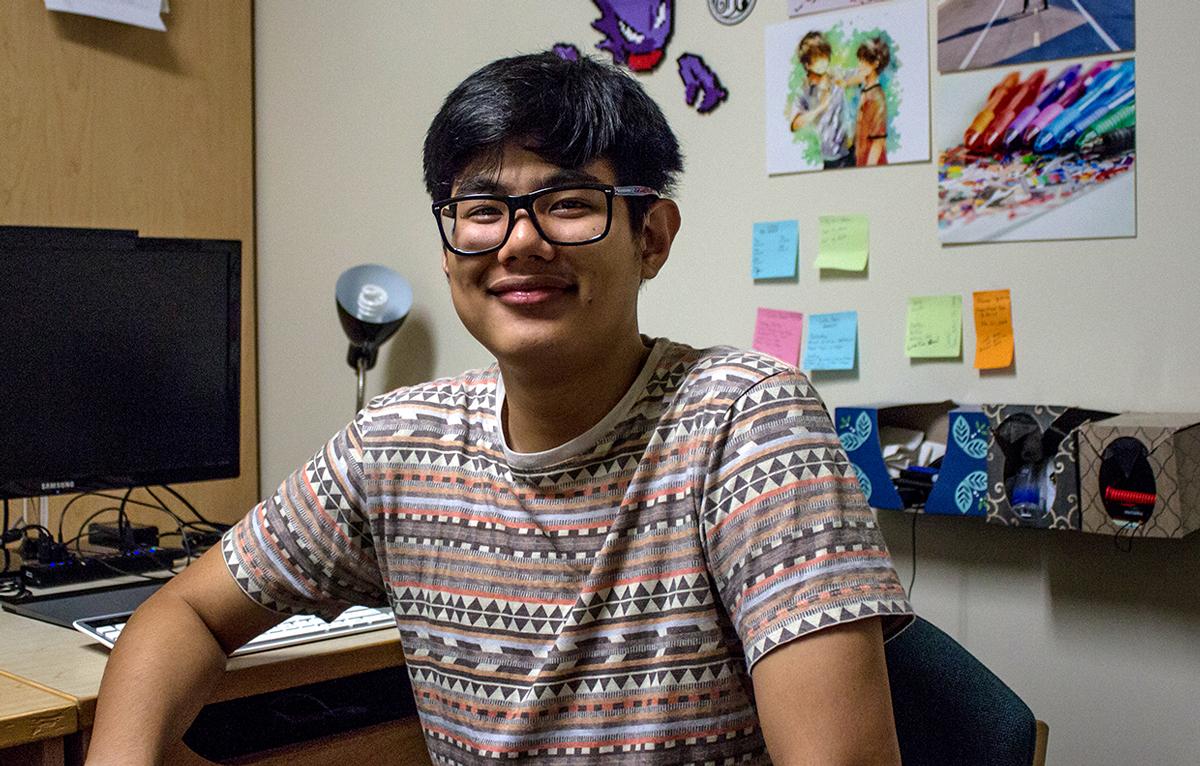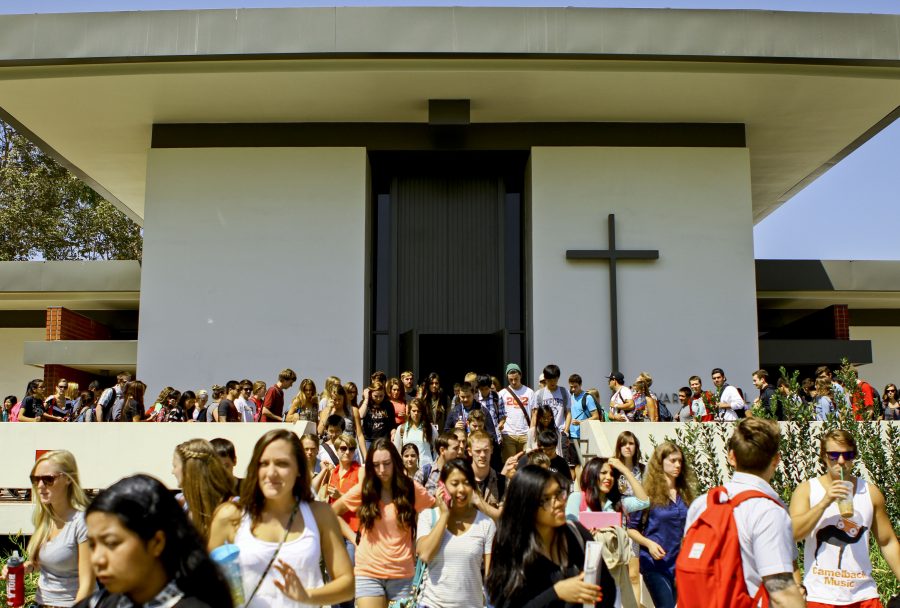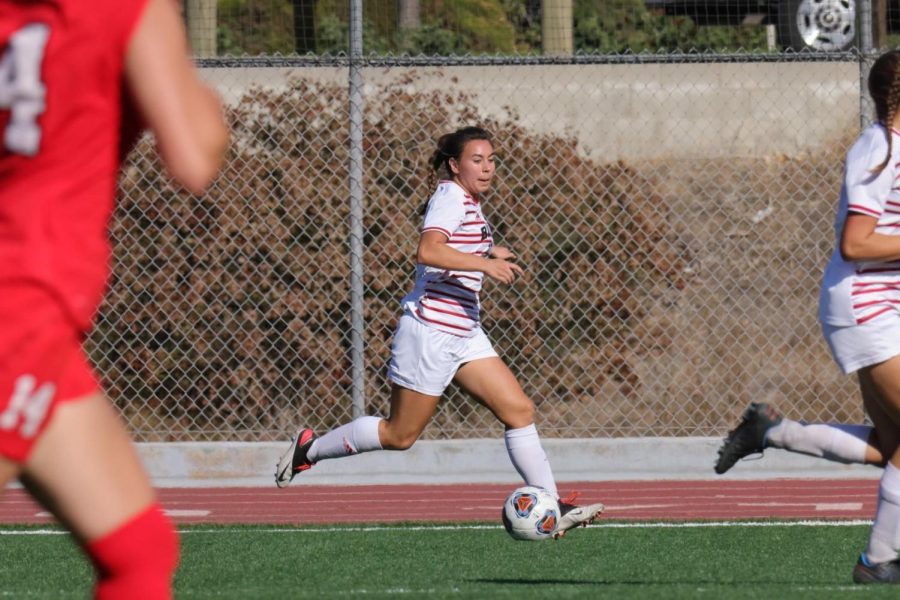Lingering on the edge of class discussions, John Uy patiently follows the conversation on a computer screen. He rarely offers his own ideas, understanding a barrier exists between him and fellow students. Since birth, Uy has been severely deaf in both ears. In 2008 he received a cochlear implant and compares the sounds he now hears to the way a foreign language sounds to a person who does not understand it. Uy is not frustrated when people hesitate to attempt communication with him — he knows how uncommon he is, especially at Biola.
However, he does not wish people with disabilities to be thought of as a source of pity, or inspiration.
“We are human beings and want to be treated the same way as you treat your family, friends and strangers,” said Uy.
ALTERNATIVE LEARNING ACCOMODATIONS
The Learning Center handles 200 cases a semester of students who have self-disclosed a condition requiring accommodation in the classroom, including physical, emotional and psychiatric disabilities.
Uy is one of five legally deaf students at Biola, who utilize a variety of means in an attempt to have a normal university classroom experience.
“Though I can hear, I am also dependent on lip reading and if I can’t see someone’s face or I’m in a dark environment, then I’m totally lost,” Uy said.
Figuring out the best accommodation in the classroom can prove difficult if a student has not been technically accommodated before entering college, said Jennifer Roode, director of the Learning Center. The Center offers accommodation options in light of professional recommendations received for each student, then options are discussed with the student, said Roode.
Uy contacted the Learning Center for support in his upcoming classes before coming to Biola in the fall of 2012. Offered several different options, he requested to have a Communication Access Realtime Translation, or CART, captionist assist him in each class.
CART is a service where as captionists type, the student sees the text on their computer as it is spoken, said Roode.

MEETING STUDENT NEEDS
The Center’s primary concern is meeting student’s needs, and the cost of their accommodation is typically never discussed with them. The Center tries to be fiscally responsible with their budget, said Roode. However, if a student needs something and there are no other options, the Center can get the funds to most reasonably accommodate that student.
“[Some options] can get very pricey, but it’s not a barrier for us,” said Roode.
Although Uy requested captionists, he was first asked to try out having professors provide lecture notes or Powerpoint presentations. Throughout his first semester, Uy had a difficult time.
If one of the professionally recommended accommodations does not work, a process of trial and error begins, something that is frequently necessary. The Center checks in with the student and tries different options in search of the best fit, said Roode.
“The first semester was really tough and I didn’t understand the professors. If they called for group discussion, the experience became hard to endure as I continued to feel out of place and not know what was going on in a noisy classroom of students talking at once. It became worse in second semester and my grades started falling,” said Uy.
Uy finally requested again for CART services, and this time received them. His grades began to improve and Uy felt included in class conversations.
“It really is expensive, but it’s education, and he deserves to be on equal ground with all the other students, getting the ‘goodies,’ all the extra information on a real time basis. As much as possible he should have that,” said American Sign Language professor Koreen Husted.
The following year, Uy again asked to have captionists, and had them in all classes until spring semester.
“I was doing pretty much ok, but by the spring semester of my second year, they decided to cut down the number of captionists as I was told it was expensive for them,” said Uy.
The Center asked Uy to try out having a student accompany him to class and type notes of the lecture live for some of his classes, in place of captionists. Uy says although the student note-taker did a great job, the notes did not compare with having captionists involving him in live conversation, due to a longer delay.
Uy continued to press for captioning in all his classes after explaining to the Center his experience with this option. Again this fall, Uy has captionists accompany him in all his classes.
“For John, the challenge is, even though he is in a room full of students, he is isolated. When he was in my [ASL] class, to use his words, ‘It felt like home.’ Everybody was on a level playing field. The class is conducted without voice, it’s all in sign language. He was the same as every other student in the class, and I think that is the thing that was so meaningful and great for him,” said Husted.







